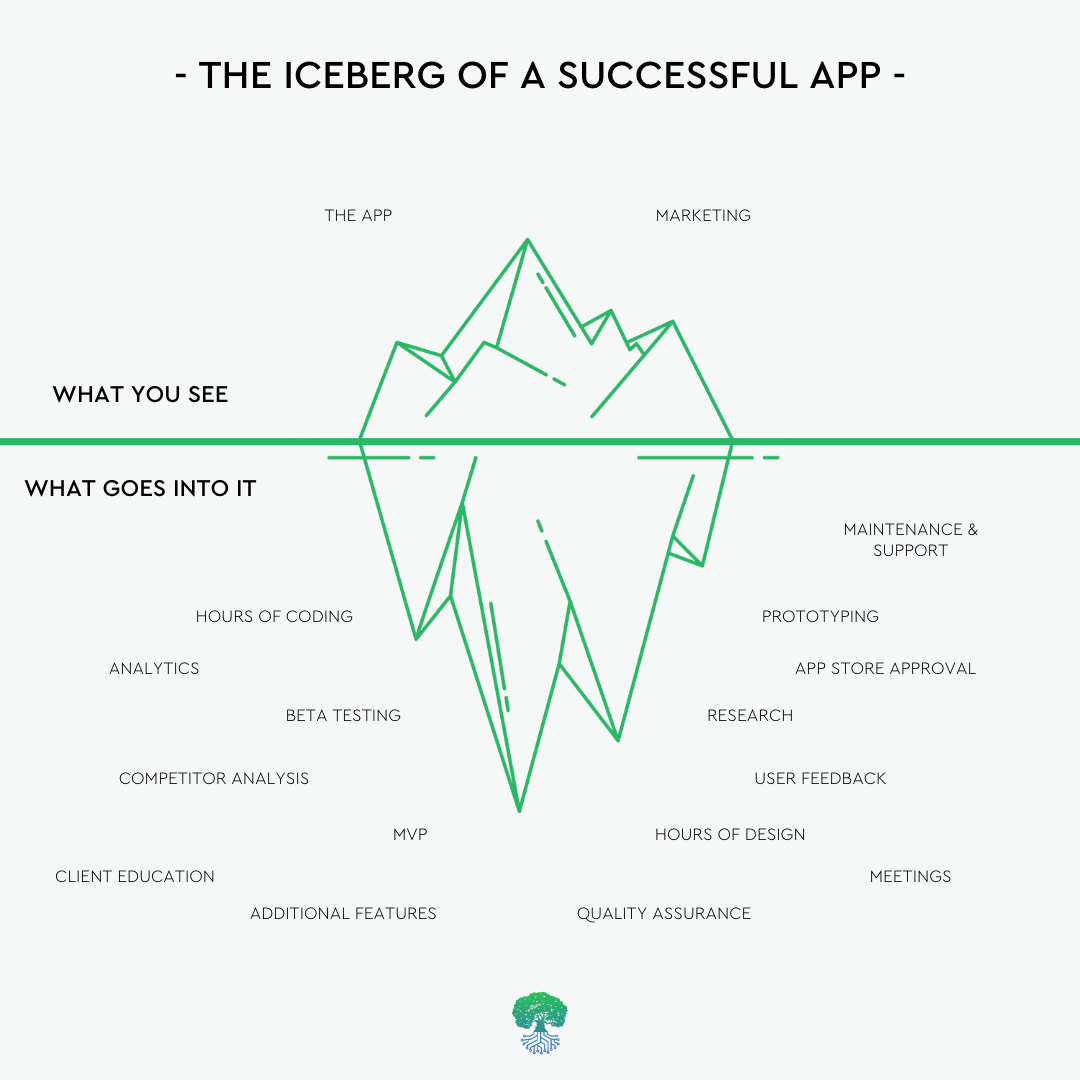Nov 20 2022
And other frequently asked questions we get about developing apps
Sometimes it can be surprising to learn how much truly goes into an app's design, build and launch. Gain insight into project phases, the tools we use, a client’s involvement, and the timeline of building an app when working with OakTree Apps.

What kind of methodologies do you follow?
Our team of expert developers and designers loosely follows the agile product methodology. We work in 2 weeks sprints, where we discuss the tasks that need to be worked on for each phase and sprint. We provide product builds at the end of each sprint. We also are happy to provide weekly updates on client sync-up calls.
Who is the main point of contact during each project phase?
We pride ourselves on removing unnecessary layers while working on projects. Our clients work directly with our developers for clear communication and expectations throughout the whole process. No project managers or intermediaries!
What’s needed from a client to get started?
After our initial conversations and contract, we’re ready to dive into the design and dev of your app! Ideally, our clients give us an SOW (statement of work) detailing all of the requirements. Typically these documents help us understand the app features, functions, and various UX flows from the app’s end-user perspective. Although it’s not required, it also helps us visualize an end product tremendously if our clients have any wireframes or other designs.
How long does it take to build an MVP?
Many of our projects start as an MVP (minimum viable product). This is a great way to get your app into the hands of users quickly while gaining feedback and adding new features over time. Building an app MVP depends on each client and the product requirements, but for most greenfield projects, a timeline of at least three months is a good starting point.
What tools do you use throughout the project?
Our team uses many industry-leading tools to get the job done! Here are just a few examples:
For developing mobile apps, we often work cross-platform with Flutter, which helps our clients save time and money (one codebase that’s built for multiple platforms). In addition, we often develop and test our backend products on Firebase, work with design tools like Figma, and use AWS for hosting capabilities.
How do you approach product testing?
We always support our clients through each phase of their app launch, and testing is no exception! At OakTree, we typically do unit testing on our codebase. However, we always recommend manual testing on the product before releasing it to the public.
Once each sprint is completed, we provide a Testflight build on iOS for internal testing. When the app is far enough along, each client tests and provides feedback on the product. After a few rounds of feedback from the client and once we get the greenlight with release notes, the build is deployed to the App Store automatically using CI/CD tools like CircleCI or Bitrise.
What is your coverage rate on unit testing?
Unit testing is vital to ensure the app’s code is implemented correctly. We aim for 70% of test coverage for unit testing. However, this is always contingent on the project scope and timeline. In certain cases, we will only unit test mission-critical features to save the client time and money.
Is there a difference in deliverables for web2 and web3 projects?
Yes! All of the questions above are typically for a Web2 project process. For Web3 projects, once a product is ready for testing, we strongly recommend clients get a security audit from a third party, in addition to the testing we do, to give clients peace of mind. We are happy to say that all our Web3 projects thus far have never had a significant security flaw.
Once the audit report has been passed, we deploy the smart contract on testnet, and ask our client to verify the contract by testing it out. We also note some deployment metrics on testnet, which is then used to compute the possible gas fees for deployment.
We always let our Web3 clients know what to expect regarding deployment fees for the given date and time. If we feel that the deployment prices may be too high, our team will suggest an alternate window. We also provide go-live support for a 2-hour time slot once a Web3 project goes live!

